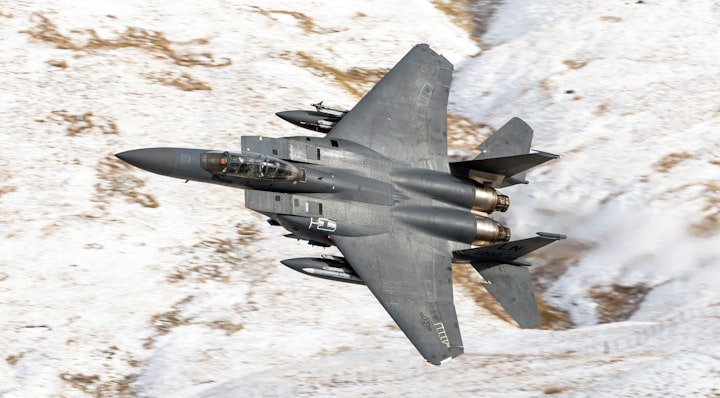
Is it possible to have a tank that is overly powerful? Check out the incredible turbine engine that drives one of the world's most elite tanks, the M1 Abrams! 💪📈📈💪
Many people consider the M1 Abrams to be the world's top main battle tank. While many nations undoubtedly have some strong contenders for first place, the Abrams has a secret weapon that gives it the advantage over its rivals. The Honeywell AGT 1500 gas turbine engine, which is located deep inside the tank's belly, is what allows the vehicle to shoot and move as it does. Look at this engine's advantages in more detail. The engine is a real monster to start. It generates an amazing 1500 horsepower of energy by using a gas turbine engine with both high and low pressure compressors, as well as a high and low pressure power turbine. When fueled, the Abrams can travel at a remarkable 45 mph on roads and around 30 mph off-road. It may surprise you to learn how the Abrams tank came to be one of only two in use with a gas turbine engine, the other being an early version of Russia's T-80.
You wouldn't be the only one scratching your head if you wondered why the Abrams actually has a jet engine. It was also a hotly debated topic as it was being developed. The US made the decision to make its main battle tank more deadly at the beginning of the 1960s. Even though the M60 had served its purpose well, many people thought it was a very weak tank. It was the heaviest main battle tank in service and one of the heaviest tanks the US had fielded up until this point, weighing in at over 50 tons combat-loaded. However, there was only one issue. The M60's Continental diesel engine, which could only muster 750 horsepower, severely constrained its speed and maneuverability both on and off-road. American army officers did not want their tanks to be outpaced and outflanked by Soviet tank formations simply because they could not move well, especially as the Soviets developed faster tanks.
They also understood that American tanks would keep getting heavier and more armored in order to fend off evolving Soviet weapons and ammo. A joint effort between the military and West Germans on the MBT-70 project was started as a result of this fear. German engineering know-how was to be applied to the MBT-70 to create a better tank engine for the project. After all, Defense Secretary Robert McNamara was reportedly an enormous fan of German engineering and thought that the two countries could construct an unbeatable tank with German engines and American guns and armor. But things didn't always go as expected. German tank development lagged behind Cold War trends. Congress officials began to question the project due to ideological differences and rising costs.
Congress decided to stop because the costs had risen far beyond their original projections. It was mandated that the DoD create a new tank, but they had to do it economically. Armed with their orders, Army officials started working on the XM803, which eventually became the XM-1 project. The Army tested a number of radical design modifications over the ensuing ten years in an effort to make American tanks more lethal, not just now but in the future. The decision to use a gas turbine engine instead of a traditional diesel or gasoline engine was one of those revolutionary changes, and it was motivated by the engines' success in helicopters during the 1960s. The Army's first supplier of aircraft engines was Lycoming. Compared to conventional engines, it had a more advanced design that was lighter and more potent.
This was significant because it allowed helicopters to transport more people, ammunition, or fuel. Additionally, compared to earlier helicopter engines, their developed gas turbine engine family required less maintenance. Although the initial cost was higher, as time went on, the cost per flight hour decreased as a result of the aircraft spending less time being serviced on the ground. Army officers made the decision to treat tanks the same way after considering this concept. After all, the two main competitors' cost proposals weren't too dissimilar from one another. Although maintenance costs make up the majority of a tank's cost for the majority of its life, the increased cost savings from less maintenance persuaded Army leadership to take the risk.
The engine was put through testing after the contract was given to Chrysler, which later changed its name to General Dynamics Land Division after selling its stake in its military manufacturing facility. The soldiers who used the vehicles for the first time saw outstanding results. Of course, gunnery and armor were at the top of the list, but everyone was surprised by how quickly it could move. However, there was a problem. The tank used a lot of gas, as was to be expected. Although no one was surprised, the main issue was that the Auxiliary Power Unit was missing from the initial models, which forced tankers to run their engines at idle and waste fuel. An auxiliary power unit is similar to a small engine in the world of tanks. Its function is to supply power to the tank's primary systems, including its fire control, night vision, and fire suppression systems.
Prior to the invention of APUs, tank crews had to continuously run their vehicles' engines, wasting fuel and making the tank easier to spot. Tank crews could now fight in fixed positions or remain on over watch duties without wasting gas thanks to the incorporation of an APU. Naturally, the crew could start the engine and leave right away if the tank needed to move. But to ensure that fuel consumption is kept to a minimum during the prolonged periods of inactivity, an APU is needed. Army officials ordered Chrysler to install an APU following initial test runs in Europe. The use of a gas turbine in those early tests was questioned for other reasons as well, though this was not the only one. For instance, the original air filters weren't sophisticated enough to block fine dust and debris like sand since the engine needed to be sucked in enormous amounts of air through its intakes.
As a result, the original XM-1 tanks did not perform well in environments that were dry and sandy. Despite the fact that improving air filters was a relatively simple solution, these issues raised enough of a fuss with Congress officials that they mandated the creation of a diesel engine. Congress argued that a diesel engine design needed to be developed concurrently with the current design because the Army kept identifying problems with the gas turbine engine. In this manner, if everything else remained the same and the tank was prepared for combat without an engine, the military could install a dependable diesel engine and figure out how to implement a gas turbine later. For the benefit of General Dynamics, all of these initial problems were resolved as they continued to enhance the original design.
The tank was and continues to be extremely fuel inefficient, despite the APU's significant reduction in wasteful fuel consumption. The Abrams is undoubtedly one of the least fuel-efficient tanks currently used in battle, averaging just under a mile per gallon. General Dynamics was well aware of this issue and, starting in the 1980s, collaborated with Honeywell to modify the AGT 1500 design. The two businesses made a number of adjustments during the initial round of trials designed to increase fuel economy. The high-pressure turbine rotor was strengthened and improved for durability. The high-pressure turbine cylinder received a brand-new, special coating to stop air leaks. To ensure maximum fuel efficiency, the design team modified the recuperator's construction materials and downsized the power turbines.
Even so, the tank's fuel efficiency increased by only about 10 as a result of these changes, but that was sufficient. The Army liked the engine more generally for other reasons besides this one, though. The fact that the gas turbine engine was digital was one of the primary factors that led to the Army selecting it over a diesel one. Army officials were aware that the best main battle tanks would be controlled by computers as computers became the norm in the future. Because of this, the brains of the engine are in its electronic control unit. This computer's job is to control the engine's fuel in real time to maximize fuel economy. Naturally, however, as is the case with any type of engine, it is not impervious to malfunctioning. Fortunately, Honeywell came up with a solution for tank crews.
The military assisted in the early 1990s development of this system, also known as Turbine Engine Diagnostics, or TED. This was created to assist soldiers in the field in finding any engine issues as quickly as possible, repairing the issue, and returning to the fight as soon as possible. Traditional methods of troubleshooting frequent problems like an engine not starting are more challenging when dealing with computers because they may have many unseen faults associated with them. TED solved those issues.






Comments
There are no comments for this story
Be the first to respond and start the conversation.